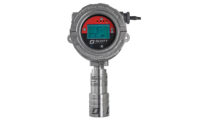Devices that detect potentially hazardous gases or airborne environmental pollutants are out there. But they’re expensive and bulky. Now M.I.T. researchers say they’ve developed a way to get the same.
The research team modified what are called near-field communication tags, or NFC tags. Smartphones with NFC capabilities send out magnetic field pulses. The magnetic field creates an electric current on the tag that the phones pick up. Such systems are typically used to track products or drugs.
For the new application, the scientists added links to the circuit made of carbon nanotubes. Each link responds to one particular gas, by changing how the nanotubes conducts electricity. By sensing the change in electric current on the tag, the smartphone signals that it has detected the gas in question.
The method was tested with ammonia, cyclohexanone and hydrogen peroxide. And the tags could sense the substances at levels of a few parts per million. The research is in the Proceedings of the National Academy of Sciences. [Joseph M. Azzarelli et al, Wireless gas detection with a smartphone via rf communication]
Such inexpensive tiny tags require no external power. The scientists say their NFC tag system has the potential to be widely used to monitor gases that can affect health, safety and the environment.
Source: Scientific American
Gain gas detection abilities with your smartphone



